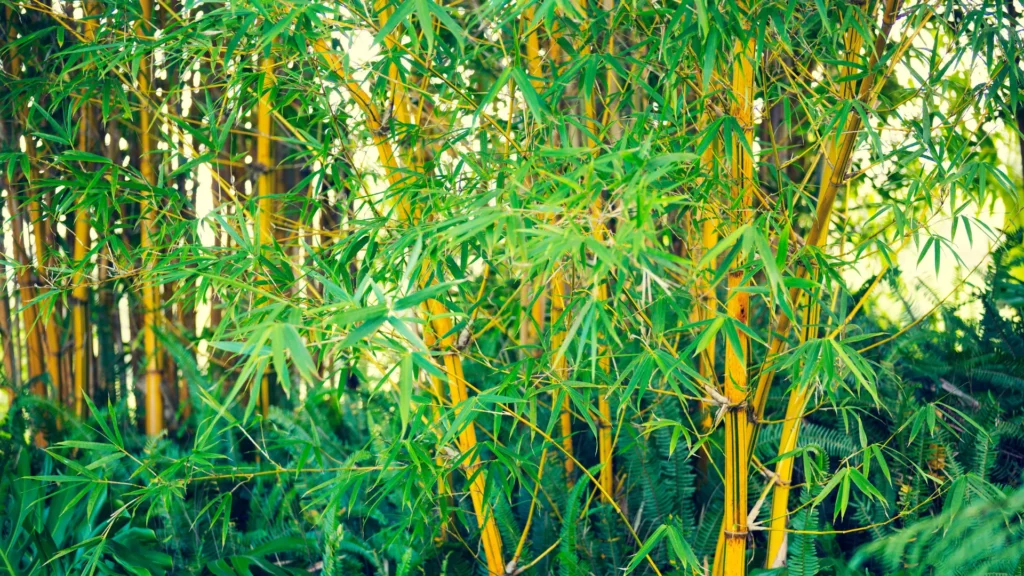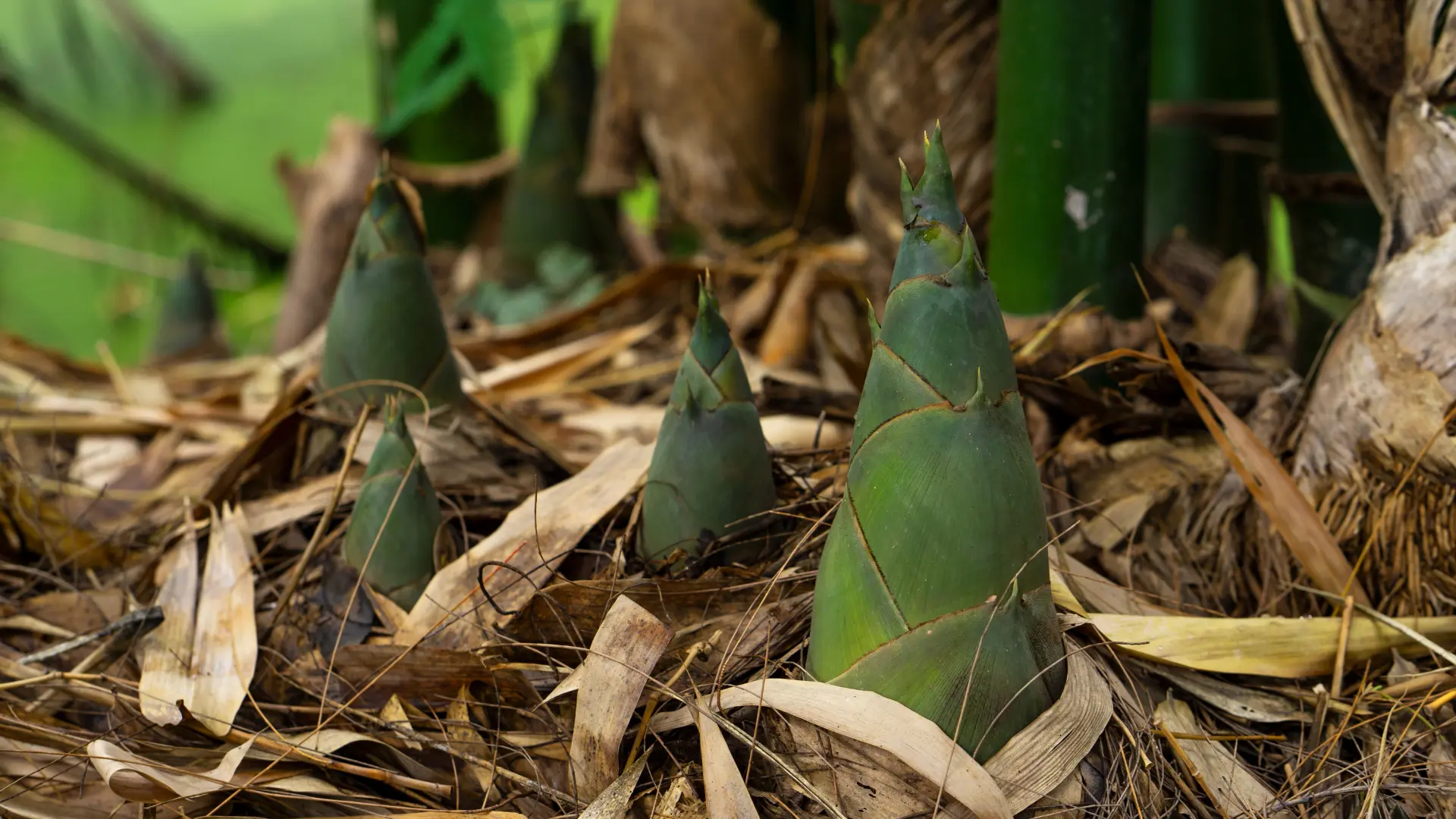Although there is a lot of variety across species and growing conditions, Bamboo generally requires frequent watering. The shallow rhizomes and roots require regular, at least weekly, watering but do not require intense irrigation.
In the summer heat, you should water young Bamboo and newly transplanted plants twice or thrice per week. Like any other plant, Bamboo requires soil, sunlight, and water to survive. And as a gardener, one of my most important duties is to give water to my Bamboo. Grab a drink as I educate you on the watering needs of Bamboo.
How Do I Water My Bamboo?

Bamboo sometimes is pictured as a jungle plant, and wide varieties do indeed originate in hot, humid areas. However, Bamboo is not a plant that can withstand having its feet constantly moist or one that is very drought tolerant. Consider these factors when determining how much water bamboo needs or how frequently to water it:
- Growth Patterns
Like many other plants, Bamboo grows primarily in the spring and summer. But unlike other plants, Bamboo also loses its leaves at this time. Inexperienced gardeners frequently believe that the plant needs more water when they see this natural pattern of leaf loss and mistake it for a problem. The most typical cause of bamboo plant death is overwatering, so it’s critical to identify standard leaf drop.
- Bamboos Planted In Containers
Containerized bamboo needs special maintenance and care. For these;
- Select a pot that is sizable enough and has good drainage.
- Choose soil that retains moisture but yet drains effectively.
- Check the soil daily; if the top inch is dry, water.
- Water deeply and completely every several months to remove salts from the soil.
- Outdoor Plants
You may grow a variety of bamboo plants outside. Make sure the soil drains well by amending it with sand, granite, and aged manure or well-rotted leaf mold to add humus. At least twice a week, inspect the soil. Water the plant if the top inch or two are dry. When Bamboo is first planted or during the shooting season, when new culms emerge, it requires extra water.
- Species
The type of Bamboo you’ve planted or want to plant will significantly impact how often you water it. There are more than a thousand different species of Bamboo. Various bamboo species require different amounts of water. For instance, there are bamboo species that can survive with little water. Tropical Bamboo is another type that needs at least four months of rain to stay thriving and luxuriant.
The type of Bamboo you have will unquestionably influence how you should water it. However, you should also be aware that Bamboo is considered a demanding plant on the planet. And while the lack of water might not cause it to perish, it will undoubtedly hinder its growth.
How Often To Water My Bamboo?

How frequently should bamboo plants be watered? You should water your Bamboo at least once a week if it is well-established and growing directly in the ground, in good soil with enough drainage. Bamboo enjoys a moderate amount of moisture, similar to many types of grass, although its shallow roots do not require extensive irrigation. In addition, between waterings, you should let the roots dry out.
In the Summer
It’s typical to water potted plants three times a week or more frequently if it’s scorching outside or the plants are exposed to direct sunlight. Similarly, if it’s cool out or the plants are entirely shaded, you should water less frequently than three times per week.
In the Winter
Watering frequency varies significantly during the winter depending on rainfall and other weather factors like wind and cold. Be aware that well-watered bamboo plants will fare better in freezing temperatures. On the other side, if it’s raining heavily and frequently, you may be able to go for weeks or even months without water.
Potted Bamboo
You will need more water to grow Bamboo in a planter or container than in the ground. Bamboo grown in containers does not retain moisture to the same extent as Bamboo planted in the soil. This is because there is less soil there, which would ordinarily cause it to dry out more quickly.
Therefore, bamboo plants in containers need to be watered once per week in typical weather and roughly four to five times per week throughout the summer. To be more cautious, monitor the soil moisture regularly and provide irrigation as necessary.
Bamboo Planted Outside
Due to the enormous amount of soil, which retains moisture and coolness for a more extended period, Bamboo planted in the ground often requires less regular watering – once or twice a week is sufficient.
Newly planted
Bamboo that has just been planted has to be watered more regularly than Bamboo that is already established. It would be best if you kept Bamboo from suffering from drought during its first year of growth. In the summer, you should water newly planted Bamboo twice a week and more frequently if it’s hot and windy.
Established Bamboo
The Bamboo will only need as much water as it did in the first year as it becomes established. In the absence of rain, you can water once every seven to ten days. However, you should be aware that Bamboo can quickly become upset from a lack of water during the shooting season. Additionally, Bamboo that is under water stress may abort new shoots.
What Signs Show I’m Overwatering My Bamboo, And How Do I Fix It?
You can determine the state of your plant by looking at the leaves, which are typically flat and open on bamboo plants that receive enough water. Too much water in the soil suggests there is too little oxygen available for your plant.
Bamboo needs soil that drains effectively to avoid wet soil. An overly moist bamboo will start to produce brown leaf tips. The entire leaf will eventually turn brown and fall. The roots may also smell bad or turn black. If the ground is damp, your Bamboo is too wet.
When you are overwatering, your bamboo leaves will usually inform you. Your leaves’ tips would start to turn brown. It would help if you stopped watering it for a while. Before watering again, please wait until the leaves begin to curl in on themselves.
What Signs Show I’m Underwatering My Bamboo, And How Do I Fix It?
Numerous bamboo species will roll up or turn their leaves yellow to indicate they are thirsty. Bamboo plants may also begin to lose their leaves in extreme circumstances. Although certain varieties of Bamboo can tolerate slight dehydration, Bamboo is not a desert plant.
The plant is particularly vulnerable to the effects of heat and dry winds. If overly dry, bamboo leaves roll inward. After watering, the leaves should return to normal, which indicates that there is a water shortage. The plant will retain leaves if you restore the water supply.
Some signs should be interpreted as something other than indicators of watering issues. For instance, in the spring, Bamboo renews its leaves. Therefore, Bamboo would inevitably lose its current leaves and grow new ones during this period. Unlike regular plants, which regenerate in the fall, springtime is when Bamboo renews.
